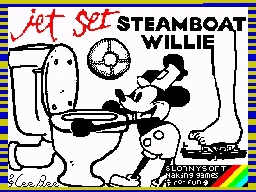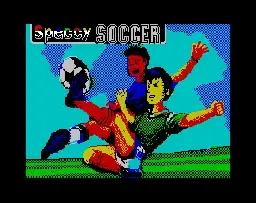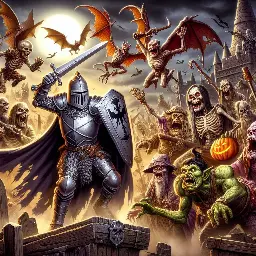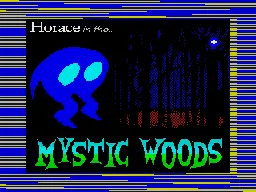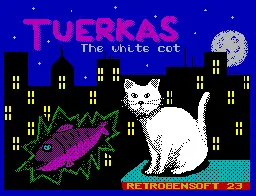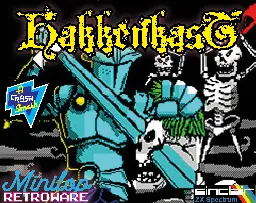
- www.timeextension.com ZX Spectrum Documentary 'The Rubber Keyed Wonder' Gets London Premiere Next Month
The film will chart the history of the iconic British microcomputer
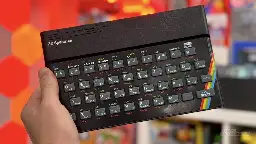
-
40 years later, a game for the ZX Spectrum will be once again broadcast over FM radio
www.racunalniski-muzej.si 40 years later, a game for the ZX Spectrum will be once again broadcast over FM radio - Računalniški muzejThere were times when Sinclair ZX Spectrum games were copied over the radio waves across Slovenia. Radio Študent broadcast screeching, beeping and whining, which we recorded on tape and played a game a few hours later. Those times are long gone, but we can take a walk through the past today. Radio Š...
> There were times when Sinclair ZX Spectrum games were copied over the radio waves across Slovenia. Radio Študent broadcast screeching, beeping and whining, which we recorded on tape and played a game a few hours later. Those times are long gone, but we can take a walk through the past today. Radio Študent, which is celebrating its 55th anniversary this week, will invite two members of the legendary Software editorial team to the microphone.
-
ZX Spectrum Next magazine
> We have just launched a new subscription site for our magazine, partnering with Memberful.
> Our brand new Spectrum Next magazine has just launched on the platform. Subscribe now to get access to the PDF of Issue #1 - the magazine will go to print next week.
- www.denofgeek.com The Games That Defined the ZX Spectrum
These are the ZX Spectrum games that helped define one of the most important gaming computers ever.
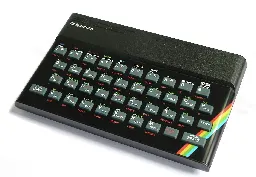
- www.timeextension.com ZX Touch Is A £220 Portable ZX Spectrum With A 7-Inch Screen
With "bare metal" emulation
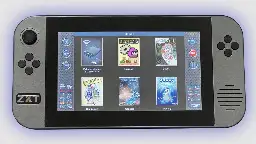
-
SymbOS on the ZX Spectrum Next

YouTube Video
Click to view this content.
news article: http://www.symbos.org/bloginfo.htm?251
---
cross-posted from: https://kbin.social/m/8bit/t/801159
> This video shows SymbOS NXT in action, the new port for the ZX Spectrum Next. As you can see, this is one of the most powerful SymbOS platforms to date and i...
-
ZX Spectrum Next - Lemmings


cross-posted from: https://feddit.uk/post/7218821
> Lemmings on the ZX Spectrum Next. > I took this not long after I got mine in 2020. >
-
ZX Spectrum Raytracer
A port of the "Computer Graphics from Scratch" raytracer to ZX Spectrum BASIC.
Slow but works!
- vidaextraretro.itch.io Sorcerer Kid Adventure by vidaextraretro
Primer videojuego desarrollado por VidaExtraRetro para ZX Spectrum.
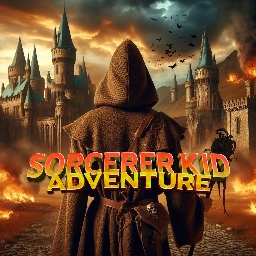
- www.denofgeek.com The 15 Greatest ZX Spectrum Games Ever Made
The ZX Spectrum, 8-bit home computer from the 80s, had a remarkable lineup of games. Here are the 15 best!
- www.eurogamer.net The Monty Mole Collection is coming to Nintendo Switch
A collection of Monty Mole games from the 1980s are making their way to Nintendo Switch.

cross-posted from: https://feddit.uk/post/6332432
> Including Your Sinclair's Moley Christmas!
-
The Spectrum Show EP 136 - Festive Special
vid.puffyan.us The Spectrum Show EP 136Welcome to the new series and episode 136 - The Festive Special. In this episode Geoff and I take the December issues of Your Computer from 1983 and make an episode out of it. We often move off on a tangent and chat about other things, but it's a nice relaxing festive special. Thanks to everyone ...
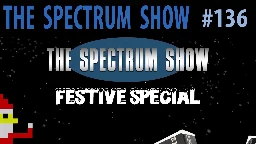
- endaraues.itch.io CHROMANOIDS by Ariel Endaraues
Maze chase game with a hungry slime for ZX Spectrum.
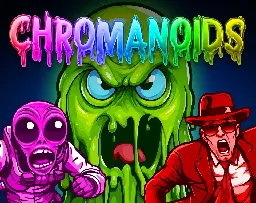
-
ZX Spectrum - The Dark, 8bits of glorious FPS


cross-posted from: https://lemmy.ninja/post/49543
> cross-posted from: https://lemmy.ninja/post/49419 > > > [!](https://youtu.be/12mYShb_VD4) > > > > If you’re an American you’ll appreciate the first two paragraphs. It will provide a context that just makes you say… “but HOW?” Our friends from Great Britain will likely shrug and skip to the third… > > > > The ZX Spectrum is an 8-bit personal home computer released in the UK in 1982 by Sinclair Research. Renowned for its affordability and wide-ranging software library, the ZX Spectrum became one of the leading computers in the 1980s European home computer market. Its graphical and computational capabilities, though rudimentary by today's standards, enabled the creation of a diverse selection of games, many of which have since become cult classics. Its iconic rubber keyboard, compact design, and the distinctive sound of its audio output have endeared the Spectrum to a generation of users. > > > > One of the ZX Spectrum's distinguishing features was its versatility and the creativity it fostered in game design. Despite the machine's technical constraints, developers found innovative ways to design a broad array of games, from adventure and puzzle titles to racing and shooting games. As a result, the Spectrum's game library encompassed many genres, including some that were relatively rare at the time, such as first-person shooters. > > > > The game The Dark by Oleg Origin stands out as an exceptional example of this creativity. Released in 1997 and now re-released in a remastered format, The Dark deviates from the typical ZX Spectrum platformer mold. The game is a unique first-person shooter, drawing parallels to the seminal PC game, Quake. In The Dark, players assume the role of warrior Alexander, embarking on a personal mission to liberate his homeland from an insidious force that has breached the land's borders. Throughout this exciting adventure, players encounter various beasts that must be eliminated with precision, be it through a well-aimed stab or a timely bullet. The game's distinctive features and the engaging quest at its heart cement The Dark as a unique entry in the ZX Spectrum's impressive game catalogue. > >
-
Final Fight: A Home Port Comparison
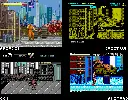

cross-posted from: https://lemmy.world/post/2342633
> Everyone knows about Final Fight, right? This 1989 Capcom beat 'em up feels almost genre defining, even though it was not the first beat 'em up of its type. Nevertheless, it cast a long shadow over games that came after it, especially those released by Capcom. > > And with good reason. Final Fight is awesome, even today. It's a simple enough concept - gang kidnaps ex-Street Fighter and new Mayor Mike Haggar's daughter, so Mike and his pals Cody and Guy undertake a mission to save her. Said mission involves beating up fools, swinging various weapons, taking part in a wrestling match at one point, and eating lots of food out of trashcans. You can play as either of the three pals, and even bring a pal of your own along as a second player. > > !The arcade version of Final Fight > > It's a lot of fun, and well worth a look today. It hurls hordes of bad guys at you that you slice through with kicks and punches and special moves. Nothing quite beats the feeling of your guy disappearing under a pile of ruffians, only to emerge with a cyclone kick to send the bastards flying. > > But it was also a technical powerhouse, with massive sprites, detailed backgrounds and a ton of stuff on screen at once. So how the hell would this behemoth fit into a humble ZX Spectrum? Grab a trash-chicken and let's find out... > > !The Spectrum version of Final Fight > > Let's deal with the Amstrad and Spectrum versions together, since they share a lot of the same DNA, not to mention failings. > > Okay, there's no two ways about this. 1991 was way late in the life of the 8-bit home micros. They were about two generations behind the curve at this point, and time had not been kind. So any hope of getting a decent port of Final Fight onto these two was wishful thinking at best. Yet, somehow, someone thought it might be a good idea... > > There are two ways you can look at these versions. > > First, you can judge them on merit. And, honestly, they come up wanting. They're both terrible games, by any measure. To their credit, both attempt to copy the arcade to the best of their abilities, including all three playable characters, all stages, most moves, a representative sample of the animation frames... but it's this ambition that cripples both ports. Because the result is a slow, jerky, indistinct mess (especially on the monochrome Spectrum) that is really difficult to play. Moves take forever to animate, collision detection is terrible, every single-enemy fight is more like a boss fight in the length of time it takes to play out. There are glitches aplenty and both versions share a quirk that sees your character getting frozen to the spot after every punch or kick, standing there like Mitch McConnell while the enemies pile on. On top of that, weapons are useless, Cody and Guy are useless, and the game generally feels like a kind of torture. > > !The Amstrad version of Final Fight > > But there's another way of looking at them... because there is clearly some achievement there. They are both recognisably Final Fight. The sprites, the locations, the enemies, all reasonable representations of Final Fight. They play like Final Fight, albeit Final Fight shot through a prism of shit. They attempt big boy feats they have no business doing, like the animated train on level two, or the wrestling arena. They both have the fancy animated intro... these are clearly not mindless cash grabs. There was talent here, talent that pushed these two machines beyond what anyone would have thought possible in 1982. It just feels like wasted effort. > > Worth a look for novelty value alone. > > !The C64 version of Final Fight > > I've kept the C64 version apart from the other two because it is a very different beast, and a very different kind of bad. As is often the case, the C64 went its own way and knocked out a port that feels inspired by Final Fight at best. The levels are similar only, the sprites are smaller, the whole feel of the game is different. > > It has a weird kind of floaty feel to it. There's this strange quirk where landing a kick will only have an effect a short time later. So you'll kick a dude, you'll get a sound effect, then about half a second after that, the dude will fly backwards. It's almost surreal. > > The thing is, this port almost feels like it could have been a decent game. Just rounding off the sharp edges would have helped a lot, and it could have been a fun two player beat 'em up in the Renegade style. It's just not Final Fight. > > !The Amiga version of Final Fight > > Surely things are better on the 16-bit micros, right? > > Well, yes and no. The Amiga port is clearly superior to the 8-bits. It has some great intro music, the graphics are colourful, the sprites massive and reasonably well-animated. It just has that undeniable Amiga-arcade-port quality of something feeling off. It doesn't feel fluid or hectic like the arcade. There are fewer enemies at once, the control is hampered by a one-button joystick and feel sluggish, and the difficulty feels off, with stunlocks happening far too often. > > But it's not the worst Amiga arcade port out there, and would probably serve you well if you were looking for bit of quick mayhem. > > !The Atari ST version of Final Fight > > The same can't be said of the Atari ST port, sadly. This version looks similar to the Amiga, but with fewer colours. It has some terrible character-block scrolling that wouldn't look out of place on the Amstrad. And the sound is about Spectrum quality. Not the ST's finest hour. > > !The SNES version of Final Fight > > Over on the console, and things look a little better, as you might expect. > > Starting with the SNES version, which is definitely the runt of the litter. It's not terrible, it plays pretty well, it just feels cut down. That's because it is... only two characters available (sob, poor Guy). No two player mode. Some weird early-90s censorship that saw various female enemies replaced by cookie-cutter male hoodlums. A whole missing level. Some missing level transitions. And a generally drab looking appearance. > > Not awful, but not great by any means. > > It should be noted that Japan got a version called "Final Fight Guy" which returned Guy to the game... at the expense of Cody. So close. > > !The Mega CD version of Final Fight > > Let's end on two high notes. > > The Mega CD version of Final Fight is superb! From the animated, voiced intro, to the faithful reproduction of the gameplay, to the extras that this version includes, everything feels complete. It plays well, it sounds amazing, it is the first port so far that actually captures the essence of the arcade incredibly well. It has lots of enemies on screen at once (not quite as many of the coin-op, but better than the SNES). > > If I was compelled to level but one criticism, it would be that the colour palette feels a little off, which is probably a limitation of the Megadrive itself. It just leaves things looking a bit... gritty. > > But that shouldn't deter you! This port is awesome and well worth a play! > > !The GBA version of Final Fight > > But for all that the Mega CD version is great, it's not my favourite... > > That accolade goes to, surprisingly, the Gameboy Advance! > > The GBA got a port titled "Final Fight One", which is basically a port of the arcade, so it counts. Unlike the SNES, all characters are present, as is a two player mode via link cable. All stages are here, and the game generally looks a lot more vibrant. Due to the nature of the GBA screen, it does feel a little "zoomed in", but you get used to it. > > Where this port succeeds the most is in how it plays. It is fluid as hell, fast and easy to control. You get the same frantic feeling as the arcade, with lots of enemies flying all over the screen. The music really adds to this feel, with some cool renditions of the arcades tunes. > > Overall, a really complete package and well worth playing today! > > So what are your memories of Final Fight? Did you suffer through the Spectrum version or were you lucky enough to get the Mega CD port?
-
Your Sinclair - A place to discuss the ZX Spectrum magazine
retrolemmy.com Your Sinclair - RetroLemmyA magazine to discuss the greatest ZX Spectrum magazine! Completely unofficial, associated with https://www.yoursinclair.co.uk [https://www.yoursinclair.co.uk] If you want to do a meta post, please prefix it with [PSSST]
cross-posted from: https://rabbitea.rs/post/243561
> I've moved this over to Lemmy so I can get a bot to periodically post old issues and pages. > > It's a quite niche community for discussion of the ZX Spectrum magazine Your Sinclair. It's also useful place for people to tag when mentioning YS, which is what my old YS Twitter account used to be used for. > > [email protected] > > [email protected] > > @[email protected] >
-
Commando: A Home Port Comparison


cross-posted from: https://sopuli.xyz/post/2821578
> cross-posted from: https://lemmy.world/post/3994305 > > > Commando (released as Senjō no Ōkami in Japan, Wolf of the Battlefield) is a 1985 Capcom arcade shooter. Word to the wise: Commando isn't based on the Schwarzenegger movie of the same name - that's some false knowledge I've carried round with me for close to forty years... oh, how I've embarrassed myself at dinner parties... > > > > !The arcade version of Commando > > > > Commando is a vertically scrolling run-and-gun shooter where you play "Super Joe", a one-man army pitted against the endless ravenous hordes of whatever country was the mid-80s enemy du jour at the time. You have a gun with unlimited ammo, and a finite supply of grenades with which to dispatch your foes. While the gun can fire in any direction, the grenades only launch upwards, which creates a need for careful positioning in order to use them effectively. > > > > The game is split into levels, and each level ends with a heavily fortified building that spews out a huge number of enemies that must be defeated before you progress. > > > > It's a cool game, one of the first of its kind. It's also fast and frantic, and doesn't really reward slow and methodical play. You've almost got to treat it as an auto-scroller, never slowing down, just moving forward and spraying your gun wherever you can. If you don't, you risk being overwhelmed by the constantly respawning bad guys. > > > > It was a genre defining title, spawning many imitators (such as Ikari Warriors, the home Rambo games, and countless others; as well as a 198 sequel, Mercs). It was also extremely tough, especially the unforgiving end-of-level sequences. A real coin muncher. > > > > In terms of ports, it got more conversions than a corrupt third-world regime has cannon fodder mercenaries. And I've looked at them all... war is hell, man. > > > > So, lock and load, we've got a lot to get through... > > > > !The Amstrad version of Commando > > > > We begin this epic journey with a familiar friend: the Amstrad. But it's not up here because it's terrible, far from it. It's actually a pretty decent conversion, albeit not as good as the Spectrum or C64. Like the Spectrum, it suffers a bit from its one-button joystick, meaning that grenades are fired by holding down the button, which leaves you a little vulnerable for a moment. I think I prefer the C64's approach of using the space bar for this. > > > > The graphics are bold and clear, if a little monotonous; the game is hard, but fair; and the sound is... okay. Overall, it's fine. Not the best, not the worst. > > > > !The Spectrum version of Commando > > > > The Spectrum port of Commando is good, seriously. It just looks bloody awful. Not sure why they chose yellow as the background colour, but they did and you end up feeling like you're wading in custard. It's not the only port to feel like this. > > > > If you can ignore the stinky visuals, there's a great game underneath. It is fast, similar in pace to the arcade and has a similar frantic feeling. It throws hordes of enemies at you, just like the arcade... no idea how the Spectrum keeps up! Bullets are very visible, making it feel fair, even the sound is okay. > > > > Overall, a great effort! > > > > !The C64 version of Commando > > > > I think C64 owners would claim Commando as their very own, and with good reason. It's very much a C64 staple. > > > > It's the theme music, you see? A Rob Hubbard classic, famously knocked up in 12 hours. And it's great! But beyond the awesome SID soundtrack, the game is amazing as well. Smooth, fluid, fair, fast, it just feels right. On the 8-bit micros, at least, it is the closest by far to the arcade. > > > > You could, perhaps, argue that it is a little bit... brown. But hey, so was the original. And it worked for literally every Xbox 360 game, so I'm prepared to let it slide. > > > > Well worth a look, even today! > > > > !The BBC Micro version of Commando > > > > We leave the well-trod paths of 8-bit machines and enter the hinterlands... > > > > The BBC Micro, for those not raised in the UK in the 80s, was a machine that was only ever owned by the children of geography teachers. It was never meant to be a games machine, it was meant to be for learning or a tool for recreating the Doomsday book (don't ask). > > > > Nevertheless, it turned in a commendable effort on its Commando homework, a solid B-. > > > > Yet another victim of the yellow backdrop curse, this effort is garish and bright. It is also pretty slow, with jerky movement. That limitation kind of changes how you play the game. It becomes more intentional, less frantic. You can take your time a little, plot out the best place to stand and fight. In that respect, it's quite enjoyable. > > > > So a reasonable effort, if a little... yellow. > > > > !The MSX version of Commando > > > > Sadly, the same can't be said about the MSX version, which isn't so much a war hero, as a war crime. > > > > It looks passable in still form, with colourful graphics that are reminiscent of the arcade. It has that old MSX thing of a multi-colour main sprite and monochrome enemies, but looks mostly fine. Sadly, it all comes apart when it moves... the main sprite jerks from character block to character block, the screen moves similarly badly. It's like viewing Commando through a flashing strobe light. The music is discordant and jarring, and plays in half-hearted 20 second bursts before giving up. Really off-putting. > > > > It's a shame, because it has all the elements of the arcade in one form or another. They're just put together in such a way that makes playing it feel like having a seizure. > > > > !The Amiga version of Commando > > > > Enough with the garish 8-bit ports, let's take a look at what the 16-bit powerhouses can do... > > > > The Amiga turns in a solid effort. Pretty boring really, leaving me very little to comment on. It's Commando... slick, smooth graphics, solid controls, a nice rendition of the arcade music. It's enjoyable to play, but doesn't really push any limits... > > > > If you want solid, authentic competency, this is the port for you. But where's the fun in that? > > > > !The Atari ST version of Commando > > > > Similar to the Amiga version, the Atari ST phones in another competent port. In fact, I actually prefer this version to the Amiga version. It feels looser, smoother, a bit faster maybe? Regardless, there's not much in it, with both versions having near identical graphics. The ST music is a bit chippier, but it still sounds authentic. > > > > Another great port! > > > > !The Intellivision version of Commando > > > > Regular readers of these posts will know that what I value more than lazily applied raw power, is moxie. And this port has moxie in spades. It's an Intellivision, for goodness sake! From 1979! It has 1K of RAM! This machine has no business running a game like Commando... and yet... > > > > Okay, it doesn't look much like the original, with the chunky colourful sprites being whittled back to one colour stick men. But it moves kinda like Commando and it sounds kinda like Commando and it plays kinda like Commando. All of it powered by sheer moxie alone! > > > > It's not the best port here by a long way, but it is perhaps the most impressive. Importantly, it's also very playable, enjoyable even! It has moxie, see? > > > > !The Atari 2600 version of Commando > > > > Now, there's moxie and there's wishful thinking, and the Atari 2600 (hailing from 1977) was more of the latter and less of the former. If the Intellivision port embodies the spirit of Commando, the Atari 2600 embodies the spirit of a two sentence description of Commando. It is super basic, super stripped back, and it doesn't really work, sadly. > > > > The graphics are limited, with yet more liberal use of yellow; the movement is perfunctory; the bullets frequently go missing and can't be avoided, and it's annoying to play rather than quirky. > > > > There are good 2600 games, games that are enjoyable even today, but this isn't one of them. Well, what do you expect? The console is basically just resistors! > > > > !The Atari 7800 version of Commando > > > > Luckily for Atari console fans, the Atari 7800 version is actually quite good. It's a proper grown-up console version, comparable to the NES port, and very playable. It has all the bits and pieces from the arcade, and adds pick-ups to give you a more powerful gun, or a knife to enable hand to hand killing (run into enemies). > > > > It looks great and moves smoothly and, if you're playing the original cartridge, it uses an extra POKEY chip to give enhanced sound (one of only two 7800 games to do so). > > > > !The NES version of Commando > > > > The NES version of Commando is probably the best of the bunch, possessing that slick console feel that leads to such great coin-op conversions. > > > > Superficially, it's a solid recreation of the arcade. It looks great, it sounds as good as can be expected, it is smooth, fast and frantic. It sometimes pushes the limits of the NES too far though, with the abundance of on-screen sprites causing some pretty epic sprite flicker. But you barely notice it in the heat of the action. > > > > Like several other NES conversions (Rygar, Strider), this one adds a number of little extras to prolong interest. It has powerups that can be collected for points or to make your weapons more powerful. Also, hidden around the levels and revealed by a well-placed grenade throw, are ladders. If you climb these ladders down, you're taken to a hidden bunker, containing either hostages, enemies or pick-ups. It doesn't add a great deal to the game, other than the need to locate these ladders, and you could even argue that it detracts from the frantic pace. But it's an interesting example of how developers tried to add a little bit extra to coin-op conversions back then. > > > > So there you have it, Commando. If you want to experience it today, try the C64 or NES versions for realsies, or the Intellivision version for interest.
- www.vintageisthenewold.com The Seance – A spooky text adventure for the ZX Spectrum - Vintage is The New Old
As of this writing, Halloween is behind us, but since 2020 is still going, the fear and sometimes horror are still lurking around. If you are the type that enjoys scary stories, you might like Quantum Sheep's new text adventure for the ZX Spectrum: The Seance. The Seance is a spooky text adventur...
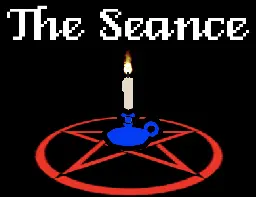
-
Retrospective: Micronaut One


cross-posted from: https://lemmy.world/post/1312535
> Some games arrive right on time, while some games arrive later than they should... but some, a rare few, arrive way too early. Like Micronaut One. > > !Micronaut One, loading > > You've probably never heard of Micronaut One, and with good reason. It was a single platform, 1987 title that was released with little fanfare and to modest acclaim, on a platform largely only popular in Europe. It wasn't a sequel itself, nor did it generate a sequel or a franchise. It simply arrived, enjoyed a moment in the sun, then disappeared... > > To my mind, this is a great shame. Not because Micronaut One was an amazing game (it was more technically intriguing, in my opinion, than amazingly playable), but because Micronaut One was so far ahead of its time that it deserves to be more widely known. > > Even without digging into the finer details, Micronaut One sounds surface-level impressive. It is a first-person, solid 3D science fiction game, on the ZX Spectrum, of all things. In it, you pilot a craft around the winding, intersecting corridors of some great ship, manipulating the energy levels of various computer nodes in an effort to stop an overload. > > As you travel around, you encounter various fauna that inhabit the ship with you. These mostly take the form of "Scrim", an insect lifeform with a three stage growth cycle - from invulnerable eggs, to creeping larvae, to egg-laying flies. > > If you fail to destroy these creatures, they inevitably mature and start forming webs that block the corridors. Eventually, you'll find your route between the overloading nodes is impossible, and overload will be imminent... > > !A scrim and a security droid > > If you know the ZX Spectrum, you can see that it's already pretty ambitious. It moves at a nimble pace in flawless 3D, looks great for a Spectrum game, and has a compelling game loop and tense atmosphere as you struggle to keep on top of the replicating Scrim. > > But it's the extra details that make this game especially impressive, and well worth a few moments of your time in 2023. In parts, it feels like a game from much later, 1997 rather than 1987 say. It's almost Descent, 10 years before Descent even existed. > > !Micronaut One's menu system > > It has a menu/pointer configuration system. This may seem old hat, but back then this was virtually unheard of in 8-bit games. This system allows you to configure the game down to the smallest detail and lets you navigate the complex mapping system. It even lets you change the colour of various parts of the UI! > > Next, it has a kind of mini-wiki built into it, giving background details on the ship and its inhabitants. Honestly, this was so unheard of back then, I can barely think of another example, let alone one this well presented. > > !Micronaut One's built-in info pages > > In game, you're giving access to a map, and on that map you can set waypoints which the game will then plot routes between. As you're playing, your HUD will display an arrow telling you which way to go... again, this feels like something from the late 90s! > > On top of all that, as well as the main game, Micronaut One also lets you play a racing mode, in which you compete against a "pacer" through the twisting corridors of the ship. It has leaderboards, various levels of pacer speed... It's amazing! > > !Micronaut One's racing mode > > So, is it the best ZX Spectrum game ever? > > No, sadly not. Despite all of its gratuitous innovation, it definitely has its shortcomings, some of which are especially vexing to a modern eye. > > It is clunky to control, as you can't turn around in the corridors. Instead, you need to stop and then hit reverse, flipping your direction. This can lead to lots of alignment issues, as there are no strafe keys. Also, the menu can be difficult to navigate, requiring you move the "mouse" from side to side of the screen to back out to the game. And the sound is typically Speccy... ie, bleeps and burps and not much else. > > But all that's wrong with it feels like something that could be fixed with a couple of months of extra work and a couple of decades of hindsight (strafe keys, a back button in the menu). > > It feels like a shame that Micronaut One never got a chance to get an Amiga sequel, or a PS1 reboot. Instead, we should content ourselves with the fleeting moment of brilliance that was all this curious little game ever became. > > #ZXSpectrum #Retrogaming
-
Hakkenkast (ZX Spectrum) by Minilop
Never got very far with this one, but it seems quite fun. Anyone else?
-
Robocop - I still think there was more fun in this game, than in many modern alternatives.

YouTube Video
Click to view this content.
- www.theguardian.com The Ultimate-Rare story: 40 years of brilliant British games, from Jetpac and GoldenEye to Sea of Thieves
Forty years since the release of its first game, British developer Rare – formerly known as Ultimate – has cemented its place in gaming history. We look back at its origins on the ZX Spectrum and NES

cross-posted from: https://yiffit.net/post/958471
> Archived version: https://archive.ph/q7BZB > > For five long years, the ZX Spectrum magazine Crash tried to get an interview with the people behind Ultimate Play the Game, which had become one of the UK’s premier games developers. They heard nothing until, one day early in 1988, Crash got a phone call. It was them. And they wanted to talk. > > Ultimate Play the Game, a trading name of Ashby Computers and Graphics, began in 1982, owned by one family: the Stampers – brothers Chris and Tim, and Tim’s future wife Carole Ward, alongside programmer John Lathbury. Even at this stage, the Stampers were supremely confident in their own abilities, honed during the development of several arcade games. “We chose [this] company’s name because we felt it was representative of our products: the ultimate games,” Tim Stamper declared in an August issue of Home Computing Weekly. The brothers designed and created games while Carole juggled administrative roles and contributed art to several of its first hits. Those early titles included Jetpac, the home computer game that thrust the company into the big time, and turns 40 years old this year. > > Initially, Ultimate focused on the UK’s predominant home computer, the ZX Spectrum, despite reservations about its technical constraints. “When the Spectrum came out, we thought ‘what a piece of garbage,’” proclaimed Tim Stamper in his 1988 interview for Crash. But the Sinclair computer grew on the brothers and its ubiquity (at least in the UK) led them to appreciate the commercial opportunities. Having begun their games-development careers creating arcade games in a minimal UK market, the brothers turned their talents towards this home computer. > > For some of Ultimate’s longest-standing fans, their first game remains their best. Coded in under 16K, Jetpac was by necessity an uncomplicated game, but it perfectly replicated arcade-style thrills at home. Its hero – Jetman, who would become an unofficial Ultimate mascot – scoots from platform to platform, picking up pieces of his rocket before fuelling it up and heading upwards to the next alien-infested rock. “What puts it to No 1 in this review is the fantastic quality of the graphics,” noted ZX Computing magazine at the time. “But the thing that really caught my eye was the incredible smoothness of it all.” > > Buoyed by the astonishing success of Jetpac, the Stampers created several more impressive hits for the Spectrum. Pssst, Cookie and the driving game Tranz Am all appeared in the summer of 1983, before Ultimate left the 16K Spectrum behind, moving to the heady heights of the 48K model. Lunar Jetman was released in the autumn of 1983 to massive praise throughout the dedicated Spectrum press. “Well, what can you say? Marvellous seems inadequate,” gushed one Crash reviewer. > > Lunar Jetman was another smash, and the Stampers quickly followed it up with the brilliant adventure game Atic Atac. At the same time, with incredible foresight, the brothers were already investigating a new console emerging from Japan, “the Nintendo”. Ultimate’s contacts in the Japanese arcade industry had led them to this new, dedicated games machine. “It had colossal potential,” said Tim in the Crash interview. “We looked at this, and we looked at the Spectrum – and the Spectrum was hot stuff – but this was incredible.” > > Tim and Chris spent several months learning all about what would soon become the Nintendo Entertainment System (NES), while simultaneously working on a game that would redefine the ZX Spectrum and create a new genre. With six high quality games under its belt in less than a year, Ultimate had established itself as one of the UK’s finest games publishers. Incredibly, it was about to get even better. > > In 1984 Ultimate released Sabre Wulf, the first adventure for a new hero, Sabreman – quickly followed by his second. Then there was Knight Lore. Presented in trademarked “Filmation”, the isometric graphics – a thing of cartoon beauty on such limited technology – predictably wowed reviewers, gamers and programmers alike. “I was handing over Match Day to Ocean when [Ocean boss] David Ward said I needed to look at this game they were distributing,” says Jon Ritman, the coder behind Spectrum isometric classics Batman and Head Over Heels. “I loaded it up and was just blown away. It was like a Disney film you could play … I didn’t even understand how they made the graphics overlay each other … cleanly as well, not in straight lines, but diagonals. It was just great.” > > Like many of his peers, Ritman soon worked out and even improved upon the Knight Lore engine, so similar games proliferated, particularly on the Spectrum. The Stampers had an inkling this would happen: Knight Lore, and a considerable portion of its follow-up, Alien 8, were already completed when the company released Sabre Wulf. All these games received glowing reviews, and with its output now retailing at a pocket-money-busting £9.95 (compared to the average of £6-8 at the time), Ultimate was at its peak. So naturally, in 1985, the Stamper brothers decided it was time to bail out of the home computer market. Rival software publisher US Gold purchased the Ultimate brand, and the Stampers reinvented their company as the console-focused Rare. > > It was the biggest switch in UK gaming history: the country’s most critically and commercially successful programmers (at least on the ZX Spectrum – things weren’t quite so rosy for Ultimate on the Commodore 64 and Amstrad CPC) had suddenly left behind the computer that had made them. Ultimate’s entire home computer catalogue appeared to be merely a calling card for bigger things. “It was sort of an introduction process,” said Chris in 1988. “We had to show Nintendo that we had the capability before they could give us the rights to go ahead and produce for their system.” After the video game crash in the US, the Stampers saw that the market was returning, and predicted that the Nintendo Entertainment System would be at the forefront of this revival. “We knew a market was going to boom in Japan and America, and we set up Rare to handle that,” noted Tim in Crash. > > By 1988, Rare had released several NES games including the downhill skiing simulation Slalom, and action platform game Wizards & Warriors. The company was rapidly approaching 20 employees, one of whom was Ritman, the creator of one of the most revered homages to Knight Lore, Head Over Heels. > > “They were very mysterious, mainly because they were so busy and didn’t have the time,” says Ritman. “They had decided to start this new company [and] there was this huge interview in Crash. So I called the magazine, got a phone number and gave them a ring!” Supremely confident, it never occurred to Ritman that Rare might not be interested in his talents. “Fortunately, they’d played my games. Years later, Tim told me he’d never seen someone so certain they would be offered work!” > > Rare established a foothold in Japan via the US and its sister company, Rare Coin-it. After it reverse-engineered the console, Nintendo, impressed by its technical prowess, made Rare its first western developer. > > And once established, the Stampers continued with their prolific output, focusing once again on a single platform. > > By the early 90s, Rare had published more than 30 games for the NES. And then the Teenage Mutant Ninja Turtle-inspired Battletoads became its conduit into Nintendo’s next-generation console, the Super Nintendo Entertainment System (SNES). By now, so confident was Nintendo in its premier western partner it even entrusted the developer with one of its own properties, Donkey Kong. “[Shigeru Miyamoto] was admirably hands-off, actually,” recalled Rare’s Gregg Mayles in Retro Gamer magazine. “I mean, he handed one of his characters over to us, and we changed the look of it completely.” > > Arcade beat-’em-up Killer Instinct followed, together with two further Donkey Kong Country games. But it would be with Nintendo’s next console that Rare would achieve its highest fame. Renowned today as one of the best movie licence video games of all time, GoldenEye 007 energised FPS gaming on consoles and, along with the underrated Blast Corps and manic Banjo-Kazooie, cemented Rare’s position in the top tier of UK games developers. > > Then the 00s brought a new era of consoles, and Rare struggled to hit the heights of the previous decade. Microsoft purchased the developer in 2002, and the Stampers departed in 2007. The family atmosphere of the 90s, when Chris and Tim sat in on interviews and left their talented developers to work unhindered, offering occasional golden nuggets of advice, was long gone. “Microsoft and Rare was a bad marriage from the beginning,” Rare’s Martin Hollis told Eurogamer in 2012. “The groom was rich. The bride was beautiful. But they wanted to make different games, and they wanted to make them in different ways.” > > Like most enduring marriages, the couple found a way to manage the relationship. The Stampers may be gone but Rare continues today, tasting success again with a popular online pirate game, Sea of Thieves. Despite its travails, Rare is still a hotbed of talent. “With all the talent in the UK and with all those thousands of people writing games, I feel it should be UK companies producing the No 1 arcade games,” signed off Chris Stamper in that 1988 Crash magazine interview. “And then everyone in the world following that – because Britain’s got the best talent, without a doubt.”
-
Trantor - it looks like it was heavily inspired by ALIENS movie, and it manages to deliver that claustrophobic dread the Marines had to feel...

YouTube Video
Click to view this content.
-
Ghosts'n Goblins - I remember this game as one of the hardest I've ever played. The dead "rising" from the earth made me feel paranoid about every step.
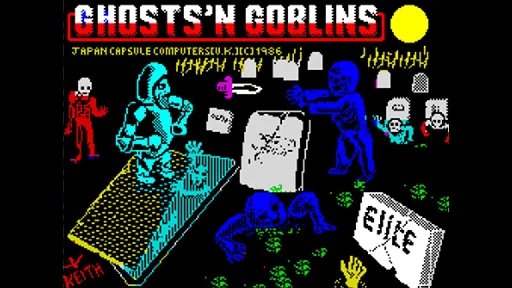
YouTube Video
Click to view this content.
-
ZX Speccy Next running Lords of Midnight

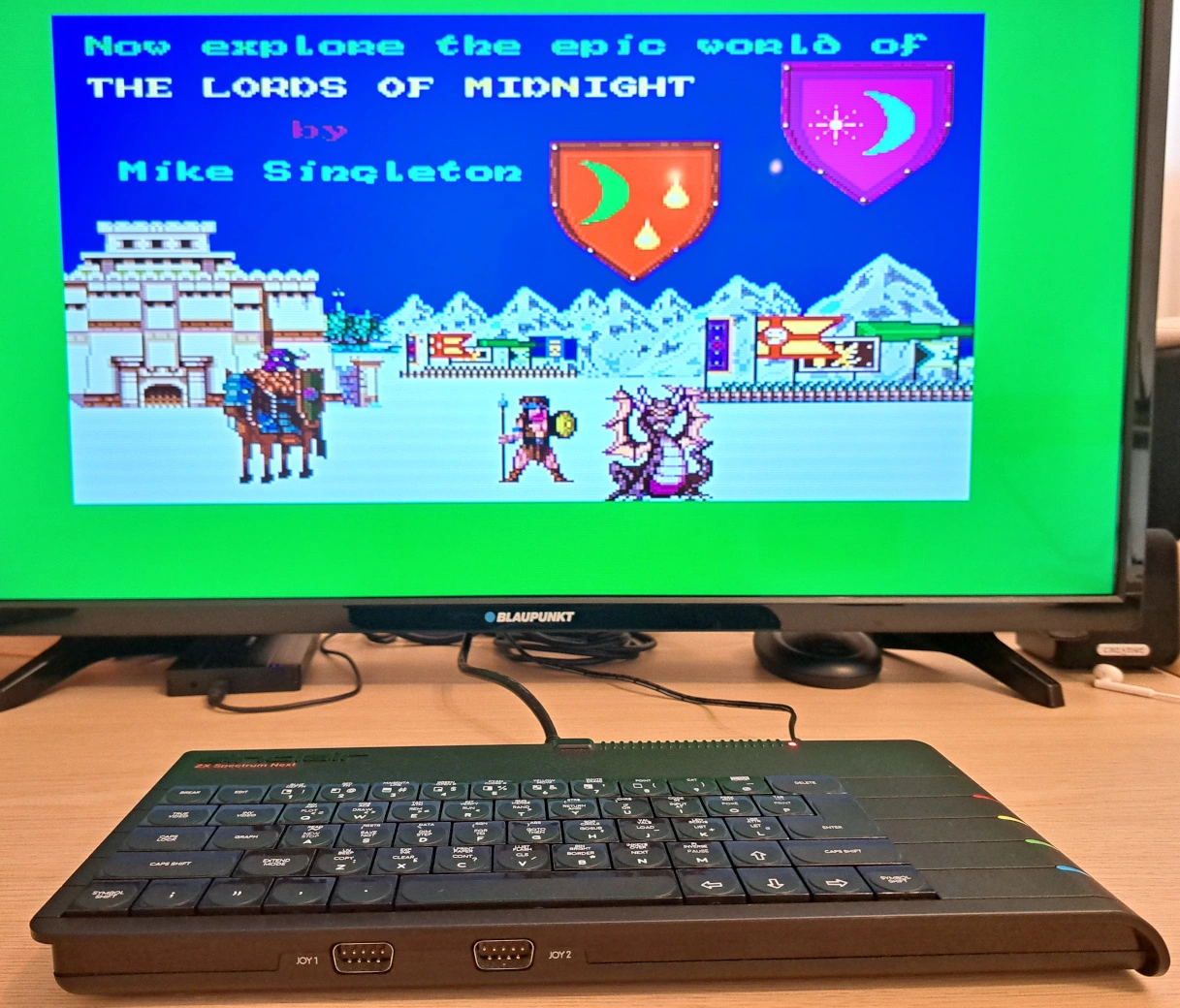
The Next version of this game is simply stunning, even on my crappy little Blaupunkt TV. Recreated by Matt Davies and Simon Butler from the original Mike Singleton release, it shows just what a brilliant games machine the Next can be.
-
Operation Wolf - when I played it back in the days, it felt "so fast and tense".
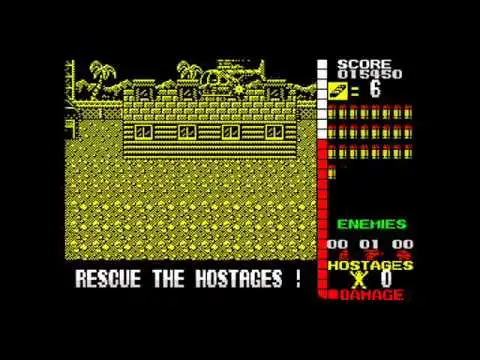
YouTube Video
Click to view this content.
-
Alien 8 - contrary to its title, the game had nothing to do with "Alien" movie. Still, it was quite entertaining albeit hard.

YouTube Video
Click to view this content.
-
Dizzy - I don't know how it was in the Big World, but around here, in my European neck of the woods, the adventures, of... well, an egg, were massively popular.
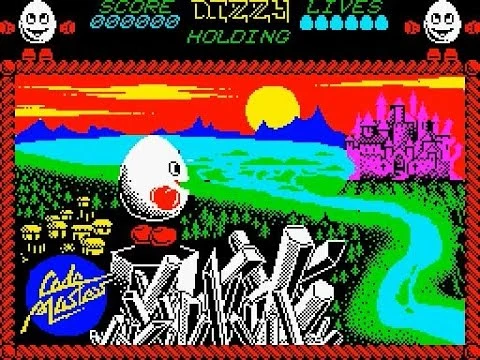
YouTube Video
Click to view this content.
-
Bomb Jack - small scene, simple rules, highly engaging: the recipe for plenty of fun
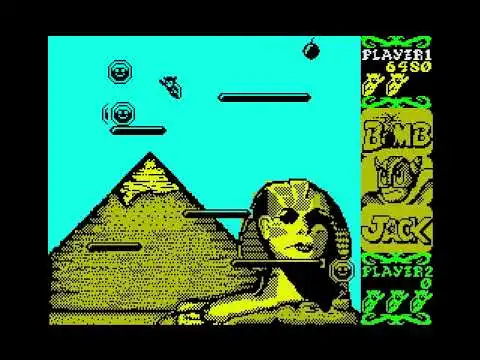
YouTube Video
Click to view this content.
-
R-Type - I wasted plenty of time for this addictive game. I still remember some levels, down to the tiniest details.
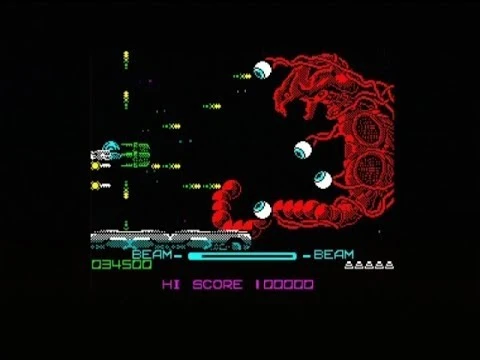
YouTube Video
Click to view this content.
-
CHASE HQ - before Fast & Furious, before LOTUS, there was Chase HQ.
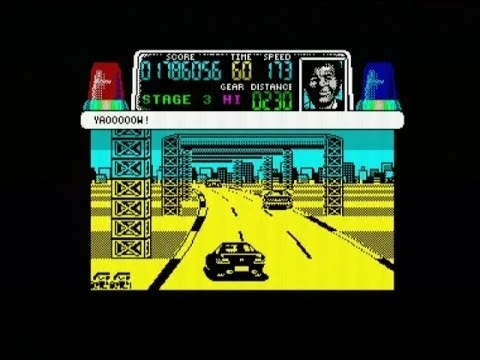
YouTube Video
Click to view this content.
-
Laser Squad - one of the oldest tactical-squad games ever developed. Still fun in the year 2023.
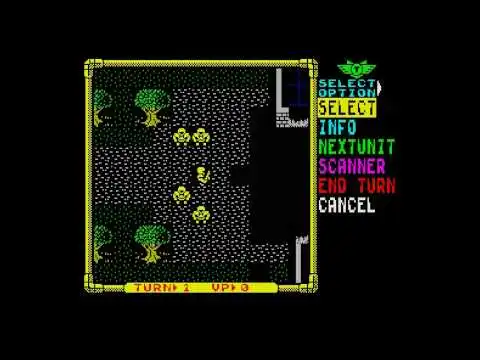
YouTube Video
Click to view this content.
-
Any ZX Omni users in this community?
Just wondering what people's experiences have been like with this device?
